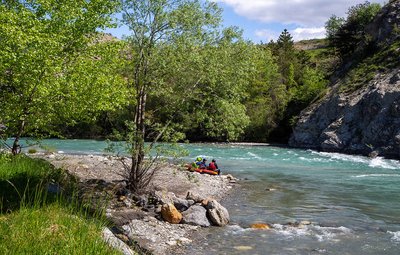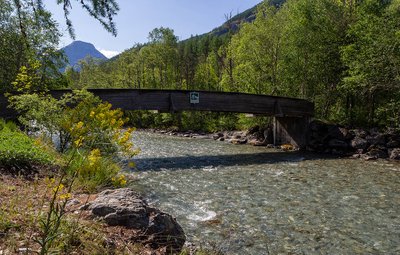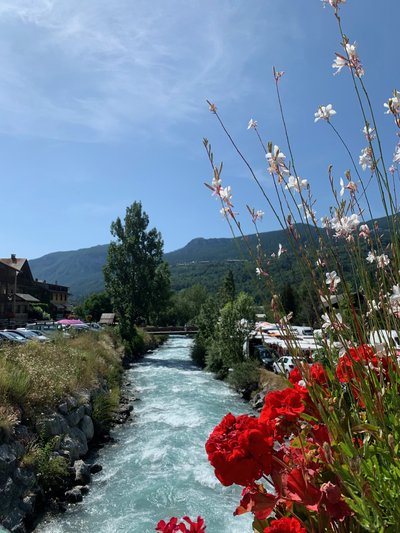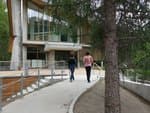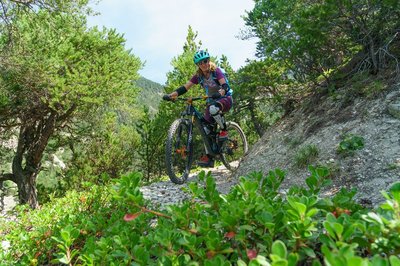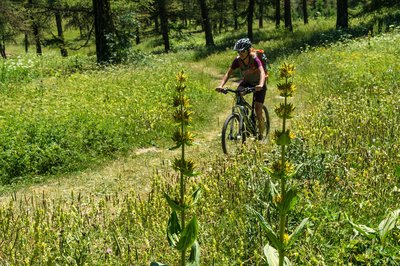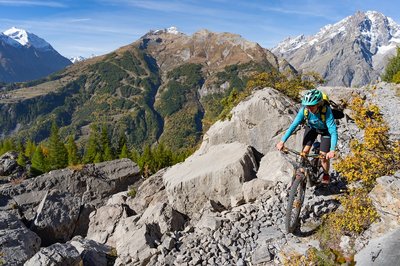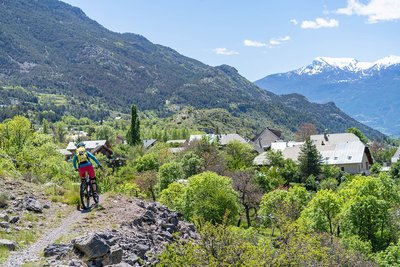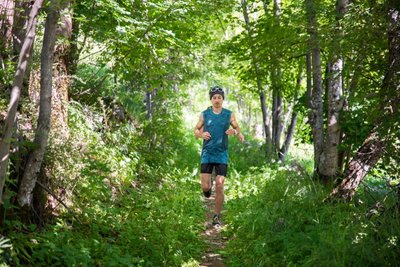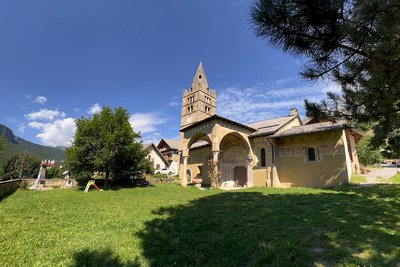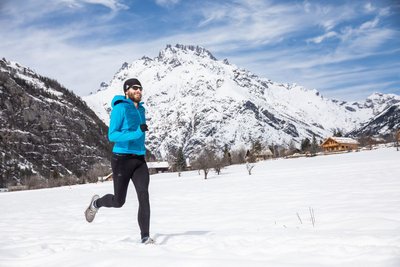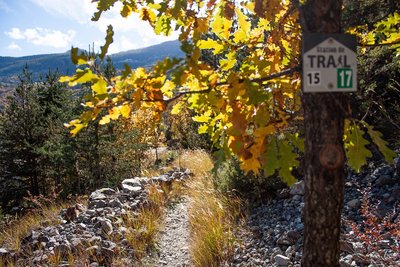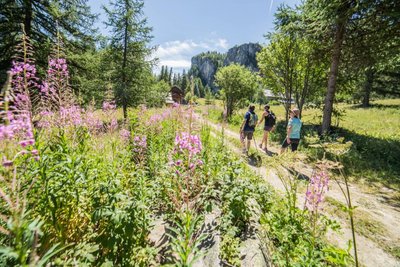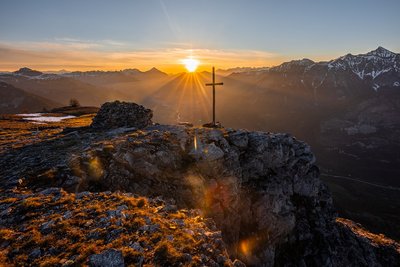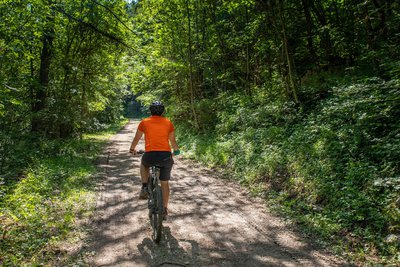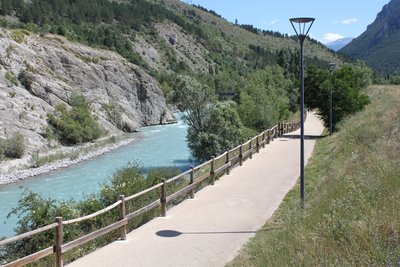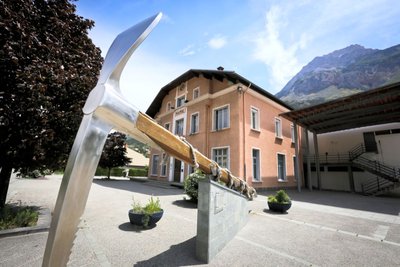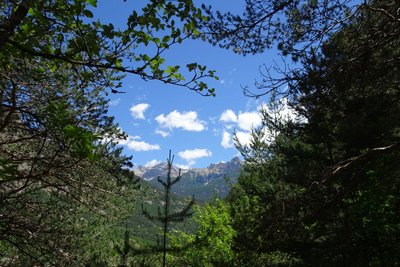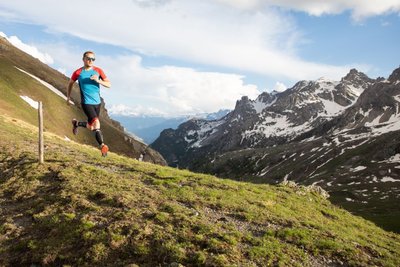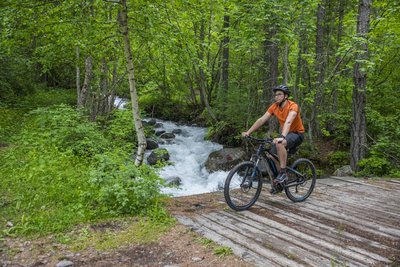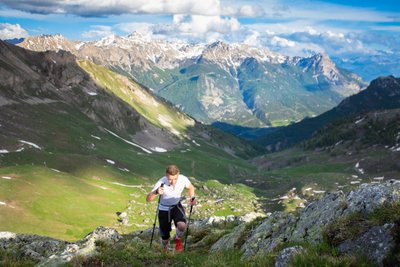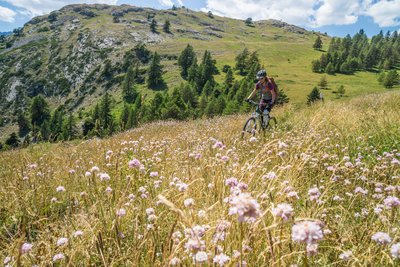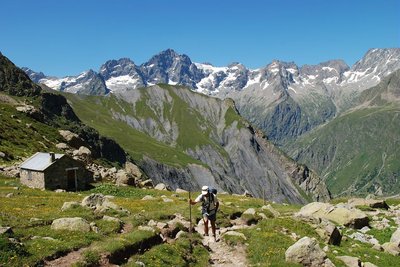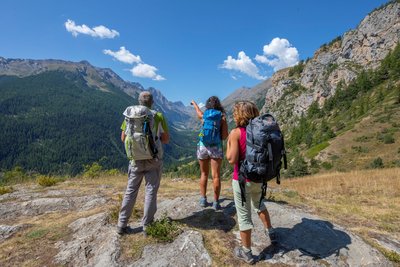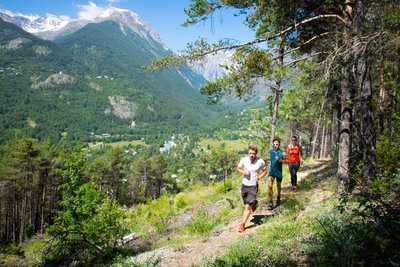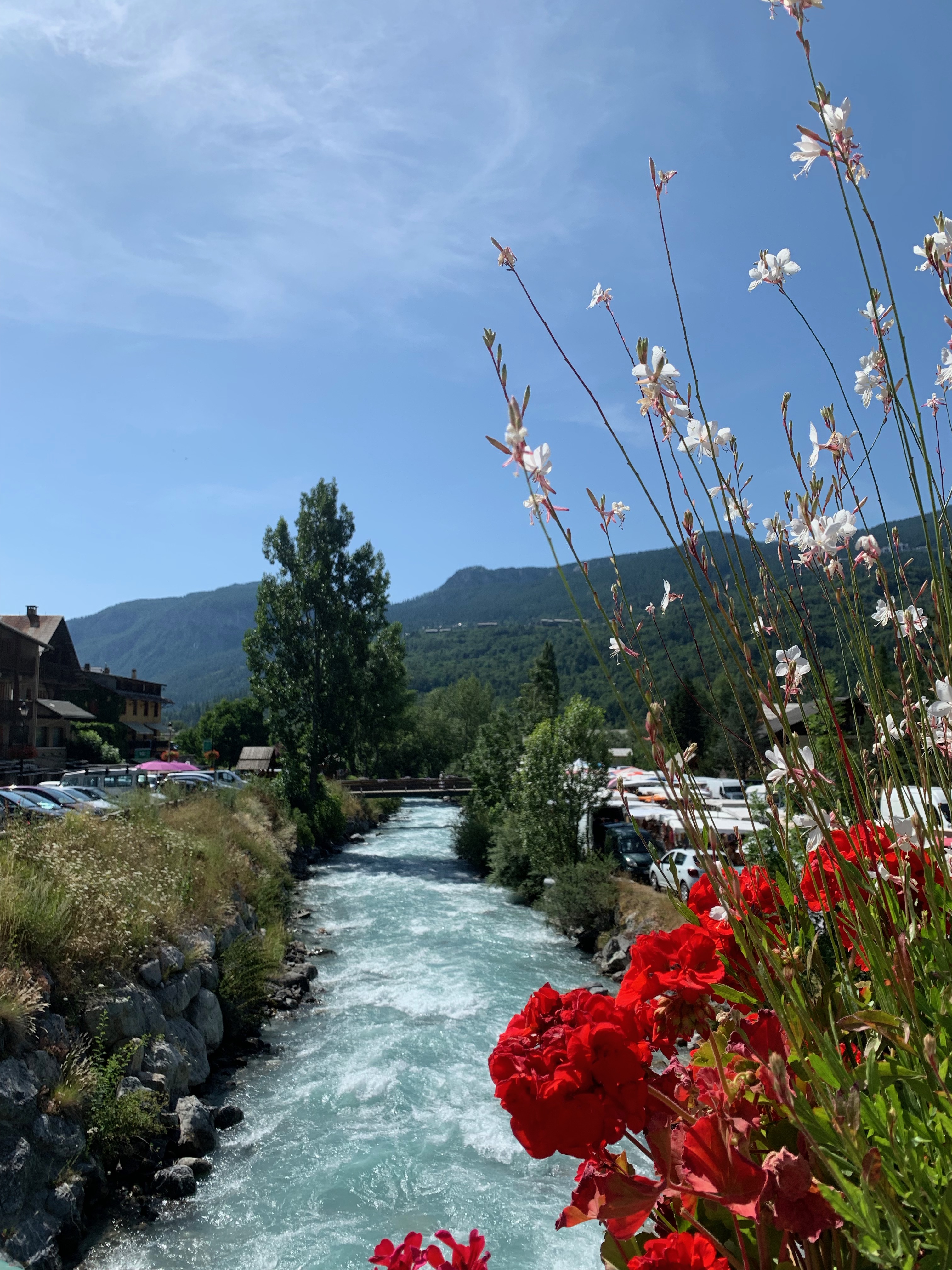
Gyronde (III / IV)
Description
This river proposes two technical courses, the first one going from Vallouise to the Vigneaux (P1), class III-IV, and the second one from the Vigneaux to l’Argentière-la-Bessée (P2), class III-IV. These two technical sections promise a tremendous white water experience with outstanding views. Very sensible to weather changes and water releases by the hydroelectric plant in Vallouise, be mindful of the ever changing water levels.
An impass is situated at the Vigneaux hamlet which requires a portage over 100 metres to then continue navigating in the direction of l'Argentière-la-Bessée.
- Towns crossed : L'Argentière-la-Bessée, Les Vigneaux, and Vallouise-Pelvoux
The 4 places of practice to discover
Sensitive areas
Short-toed snake eagle
- Impacted practices:
- Aerial,
- Sensitivity periods:
- MarAprMayJunJulAugSep
- Contact:
- Parc National des Écrins
Julien Charron
julien.charron@ecrins-parcnational.fr
Short-toed snake eagle
- Impacted practices:
- Aerial,
- Sensitivity periods:
- MarAprMayJunJulAugSep
- Contact:
- Parc National des Écrins
Julien Charron
julien.charron@ecrins-parcnational.fr
Recommandations
- Wet suits are strongly recommended (glacier waters can reach under 4°C)
- Helmet and life jacket are mandatory
- Inflatable kayaks are not suitable and strongly advised against
Important information :
- Water release : the hydroelectric plants of Pelvoux and Vallouise can operate water releases which constantly change the water levels. Seeking information from professionals is strongly advised.
- Careful with floods after a storm
- Careful with logjams, especially at the beginning of the season
- Please take your trash with you
Attention : Experience is required in order to navigate these rivers without professional supervision. This information is provided for general guidance. Checking weather reports, water levels, flow rates and conditions before embarking is under your responsability. The tourism office and the national park will not be held responsable in case of an accident.
If you have doubts, please ask a professional. Kayak schools, instructors and renting shops of the valley are here to help you.
Mountain Rescue : dial 112
Weather report
Water levels at l’Argentière : https://www.rdbrmc.com/hydroreel2/station.php?codestation=1125
Information desks
Place de l'Eglise, 05340 Vallouise
Vallouise Park house
, 05290 Vallouise
Information, documentation, models, exhibitions, screenings, product sales and works of the Park. Guided tours for school, reservation required. The new Park House opened in Vallouise since June 1, and offers visitors an interactive permanent exhibition inviting to explore the area and its heritage. A temporary exhibition space will allow a renewed offer. Finally, the device is completed by an audiovisual room to organize screenings and conferences Free admission. All animations of the Park are free unless otherwise stated.
43 points of interest
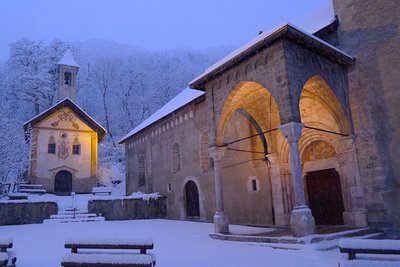
L'église Saint Etienne (à droite) et la chapelle des pénitents (à gauche) - Thierry Maillet - PNE  Architecture
ArchitectureSaint-Étienne de Vallouise Church
Listed and protected as an historic monument since 22 October 1913, the church dedicated to Saint Stephen is one of the most beautiful religious edifices in Hautes-Alpes. It is typical of the Romanesque churches in the Briançon region built in the second half of the 15th century, although its exact construction date is still uncertain.
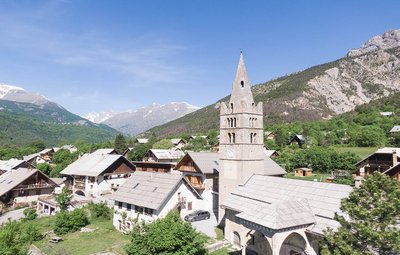
Eglise des Vigneaux - Blandine Reynaud - PDE  History
HistoryThe village of Les Vigneaux
In spite of the altitude, the region's dry climate and the local growing conditions of limestone and sediments facing due south made the planting of grapevines possible as far back as the tenth century. The municipality owes its name to the presence of these vineyard operations, which were very significant in the late nineteenth century. The almost simultaneous appearance of the phylloxera aphid and the Briançon train, bringing wine from Provence, spelled the end of this activity here.
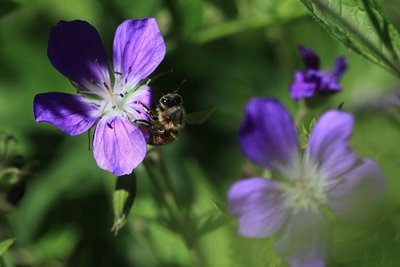
Géranium des bois - Marc Corail - Parc national des Écrins  Flora
FloraWood cranesbill
The path is edged with large clumps of a plant with purple flowers, the wood cranesbill. The leaves are palmate and divided into 5 to 7 incised and indented lobes, This common plant grows in meadows and cool woods. The «geraniums» we see on balconies are in fact pelargoniums, distant cousins originally from South Africa and cultivated for ornamental purposes.
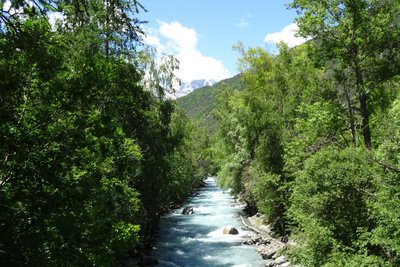
La Gyronde - Office de tourisme Pays des Écrins  Water
WaterThne Gyronde
No, we're not in south-west France where the Gironde flows! The Gyronde (spelt with a «y»!) is the river that flows between Vallouise and L'Argentière-La Bessée, where it flows into the Durance. It originates from the Gyr and Onde mountain streams which merge in Vallouise.
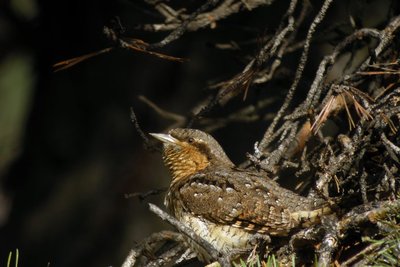
Le torcol - Damien Combrisson - Parc national des Écrins  Fauna
FaunaThe northern wryneck
In the spring, an odd song can be heard among the old trees in the orchard, a loud song similar to that of the green woodpecker, only slower. It is that of the northern wryneck. This bird owes its name to the extreme way it extends and twists its neck when it feels threatened. Its French name torcol fourmilier is a reference to the fact that it feeds on ants (fourmils in French). Difficult to spot because its plumage merges into the colour of the tree trunks, it gives its presence away by its song when it returns from its migration.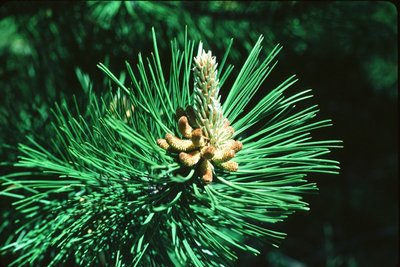
Aiguilles de pin sylvestre - Parc national des Écrins  Flora
FloraOn the south-facing slope, pine forest
The track passes through a forest of Scots pines, mixed with some downy oak trees. It is a forest typical of those found in the lower south-facing slopes (those exposed to the sun) in the intra-alpine valleys.
Le four banal du Grand Parcher - Office de tourisme Pays des Écrins  Vernacular heritage
Vernacular heritageThe hamlet of Parcher
The hamlet of Grand Parcher stands on the alluvial cone formed by the Grand Parcher mountain stream, and on either side of it. It is made up of several old houses and the seventeenth-century chapel of Saint-André. It has two sun dials painted onto its walls. One of them bears the saying HORA INCERTA CUNTIS, ULTIMA MULTIS (This hour is uncertain for all, it is the last hour for many). Food for thought!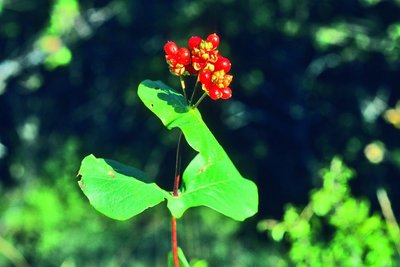
Le chévrefeuille d'Étrurie - Bernard Nicollet - Parc national des Écrins  Flora
FloraEtruscan honeysuckle
Etruria was the territory of the Etruscans, in the area of present-day Tuscany. Although this honeysuckle does not grow only in Tuscany, it is Mediterranean, however, and only grows naturally in the wild in the southern half of France. Being a plant that needs warmth, it does not grow at altitude, except here where the south-facing slopes are particularly dry and warm. Its large pink and yellow flowers are highly perfumed.
L'église des Vigneaux - Office de tourisme Pays des Écrins  Vernacular heritage
Vernacular heritageThe church in Les Vigneaux
The church of Saint-Laurent with its elegant porch dates from the fifteenth and sixteenth centuries. On its south wall there are frescoes depicting the vices, dragged towards hell by a demon, and their punishments. Enough to make you shudder! Its Lombard Romanesque bell tower has a very rare one-handed clock dating from the eighteenth century. It is one of the oldest working clocks of its type.
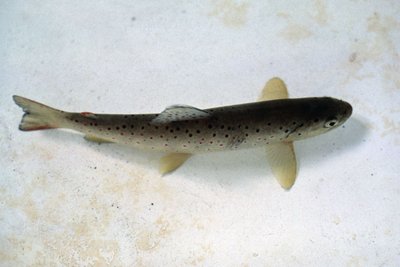
La truite fario - Parc national des Écrins  Fauna
FaunaThe trout
But what's the angler angling for? The brown trout of course! This is the mountain fish par excellence, with a streamlined body to withstand the current more efficiently and light brown skin speckled with black and red. It lives in cold, oxygen-rich waters.
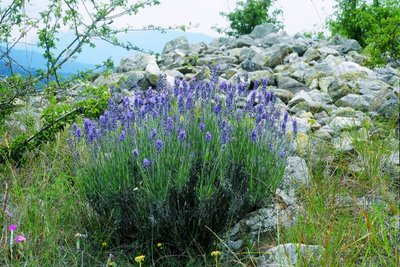
La lavande à feuilles étroites - Jean-Pierre Nicollet - Parc national des Écrins  Flora
FloraThe narrow-leaved lavender
The path crosses some limestone screes. It is a dry environment. The narrow-leaved lavender grows in sunny areas, a reminder that the Pays de Écrins is in the Southern Alps after all! Not to be confused with the lavandin, this plant naturally grows on rocky slopes in the mountains of the Midi.

Place de l'Église - Thibaut Blais  History
HistoryThe church in Vallouise
The church of Saint-Étienne dates from the fifteenth and sixteenth centuries. Inside is an altarpiece and a tabernacle in gilded wood dating from the eighteenth century, together with come mural paintings. Not far from the church stands the late sixteenth-century Chapel of the Penitents with a nineteenth-century painted facade.
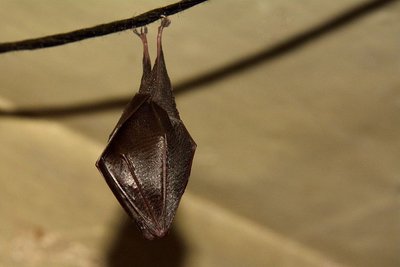
Petit rhinolophe enveloppé dans ses ailes - Mireille Coulon - Parc national des Écrins  Fauna
FaunaThe lesser horseshoe bat
In summer, bats take up residence in the church roof. The species living here is the lesser horseshoe bat, which has been in serious decline over recent decades. Every year, the mothers return after hibernating in caves and each one gives birth to one bat pup. Bats are insectivore mammals threatened by the insecticides used on farmland and on wooden structures and the loss of their hunting habitats and roosts, among other things. They are all protected.
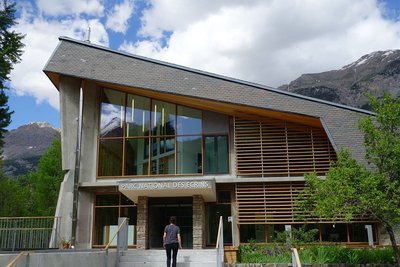
La Maison du Parc de Vallouise - Thierry Maillet - Parc national des Écrins  History
HistoryThe Vallouise Park Centre
Vallouise Pelvoux is a municipality within the Parc National des Écrins. Renovated in 2014, the Park Centre ("Maison du Parc") houses the offices of the local Park staff and has a spacious visitor reception area. It offers a permanent interactive exhibition inviting discovery of the territory and its heritage features, a temporary exhibition space on the upper floor and an audiovisual room (screenings and talks). It is currently in the process of applying for the "Tourisme et Handicap" tourism and disability label. Admission is free and so, too, are most of the activities in offer.
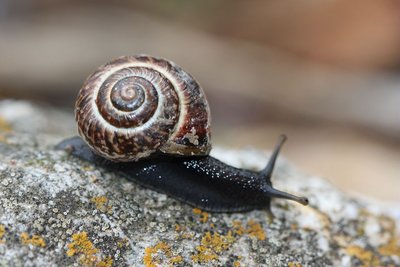
Hélice des Alpes - Damien Combrisson - Parc national des Écrins  Fauna
FaunaThe Alpine copse snail
On the damp banks of the stream, hidden in the grass, is a snail with a beautiful golden brown shell speckled with brown, decorated with a dark spiral stripe. It has a black body. The alpine copse snail is relatively rare and, as its name suggests, it is found in the Alps. It is a sub-species of the ordinary copse snail, which is present across Europe.
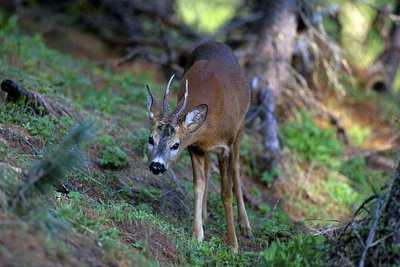
Chevreuil - Robert Chevalier - Parc national des Écrins  Fauna
FaunaThe roe deer
The forest is home to roe deer, which can often be seen. This ungulate (hoofed mammal) is rather unusual because the rut does not take place in autumn, for births in May and June as is the case with other mountain-dwelling ungulates, but in summer. After fertilisation, however, egg development is suspended for 6 months (this is called embryonic diapause). Gestation then resumes so that the fawn (or twin fawns) can be born in spring, a period more favourable for its survival.
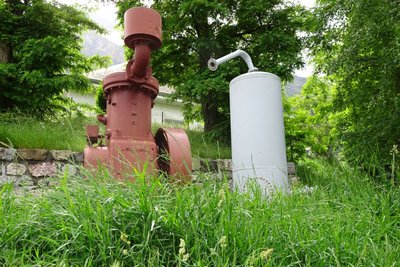
Le compresseur vertical - Office de tourisme Pays des Écrins  History
HistoryThe vertical compressor
In 1910, a 22-year-old engineer, Gilbert Planche arrived in L'Argentière-La Bessée to take advantage of the water here and open a large aluminium factory.
The vertical compressor is the forerunner of the pneumatic drill. The mine operators needed a large quantity of coal and compressed air helped to accelerate coal output. In 1852, Swiss physicist Jean-Daniel Colladon invented the pneumatic drill. The vertical compressor enabled the production of compressed air which powered a drill and simplified coal excavation. The compressor is placed vertically on its support, hence its name.
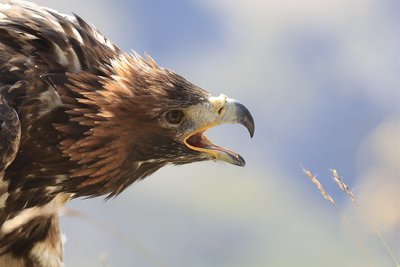
Aigle royal - Cyril Coursier - Parc national des Écrins  Fauna
FaunaThe sun bird
So what is the identity of this sun bird? It's the royal, or golden, eagle of course. Although it is telling the time here, in the surrounding natural landscape it hunts marmots. But what becomes of it in winter when the marmots hibernate deep in their burrows? It's a lean time. It has to make do with a hare or ptarmigan, and in particular the carcasses of chamois which have not survived the winter or have been killed in an avalanche.
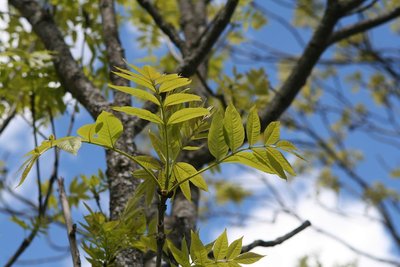
Un frêne - Marie-Geneviève Nicolas - Parc national des Écrins  Flora
FloraThe ash tree
Even in winter, the ash can be recognised from its large black leaf buds. The leaves are compound. A pioneer species that grows easily, the ash has long been used by man for everyday needs: its foliage was used to feed cattle and its hard, flexible wood was used to make a variety of objects such as tool handles. Its French name frêne often appears in local place names too: Freissinières (frêne noir - black ash), Le Freney etc. Evidence of its historical importance to human communities..
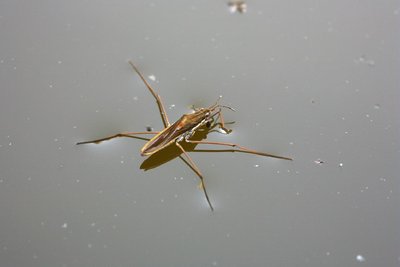
Un gerris - Bernard Nicollet - Parc national des Écrins  Fauna
FaunaThe gerris
Some strange creatures are moving jerkily over the surface of the water: Gerrises, insects related to bedbugs. Like a true insect, they have six legs and they «skate» across the water using their intermediate and hind legs which are covered in hairs to make them water-resistant. They are carnivorous and anything on the water surface, dead or alive, is good to eat! They catch their prey with the forelegs, sucking up the juices with their strong proboscis!
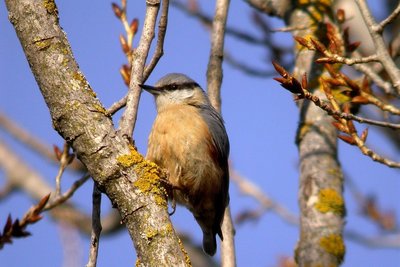
La sittelle torchepot - Damien Combrisson - Parc national des Écrins  Fauna
FaunaThe wood nuthatch
With its strident calls, this little acrobat gets itself noticed. With a blue-grey back and a black stripe over its eyes, it works its way down the tree trunks upside down in search of insects. It nests in old woodpecker nests but if the diameter of the entrance is too large it reduces it with mud, to protect its young from predators. Hence its French name torchepot (a reference to edging the rim of a vessel).
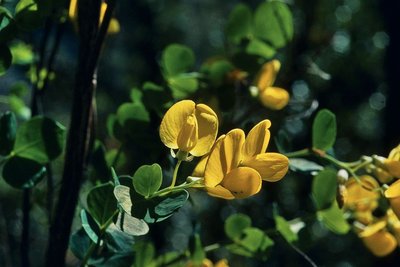
Le cytise à feuilles sessiles - Bernard Nicollet - Parc national des Écrins  Flora
FloraThe sessile-leaved cytisus
This small shrub which grows to 1 to 2 metres in light woods is characterised by three-lobed leaves on the flowering shoots which are sessile, that is to say without a stalk. It is easy to confuse with the scorpion senna, which has the same leaves but they are divided into 7 or 9 lobes. Both produce very beautiful yellow flowers in May to June.

Mousses sur roche - Dominique Vincent - Parc national des Écrins  Flora
FloraMosses
There are mosses growing on the old wall. Mosses are plants which appeared long before flowering plants, 440 million years ago. They live in damp environments but can withstand long periods of drought. They have very few requirements and can colonise virgin areas. They then contribute to the slow formation of humus, thus allowing more demanding plants to establish in their turn. There are 800 species of moss in France, all of them beautiful!
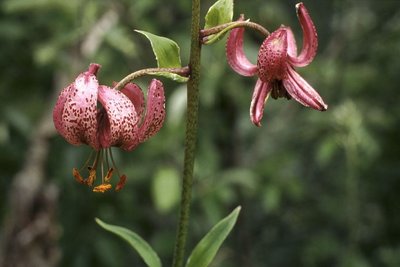
Le lis martagon - Marie-Geneviève Nicolas - Parc national des Écrins  Flora
FloraThe martagon lily
Many martagon lilies grow at the side of the path. This superb plant has large hanging flowers with curved-back petals, which are pink speckled with purple and exposed orangey stamens. Its leaves are elongated and whorled. It grows in meadows and cool woods. Although common here, it is rare in many French regions. In fact, picking it is prohibited or regulated.

Kiosque à L'Argentière-La Bessées - Jan Novak Photography  History
HistoryThe old workers' housing districts
Workers' housing districts were built to house the many workers who were employed at the Péchiney factory. These districts have now been demolished. The architecture of the houses varied according to the status of the employee. A town hall, a cinema, a bandstand and churches were also constructed.
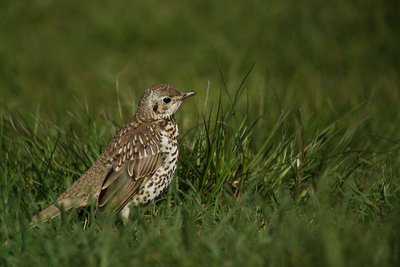
Une grive - Damien Combrisson - Parc national des Écrins  Fauna
FaunaThrushes
In the springtime, the woods echo with the song of birds seeking a mate and defending their territory. Among them is the song of the mistle thrush, similar to that of the blackbird, melodious and piping. As for the song thrush, it has a wide and varied repertoire: its song is a succession of powerful varied notes, each repeated numerous times. In summer, the birds are more inconspicuous: when raising young, there's no point in singing for a mate, better not to attract attention!
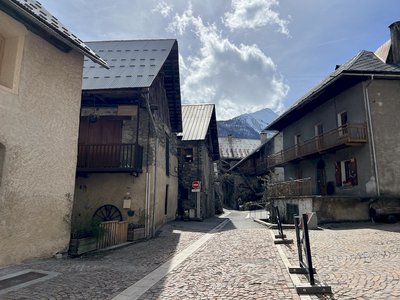
Rue de Champ de Ville - Pierre Nossereau  Architecture
ArchitectureVallouise
Multi-storey houses - typical of the architecture in the valley in the seventeenth and eighteenth centuries - stand on the old village street. The ground floor was reserved for animals, the first floor for habitation and the upper floors for grain storage. People moved from one floor to another by means of balconies interconnected by a staircase. Many of these balconies are arcaded with stone columns. This type of arcaded balcony is found throughout the valley.

La prêle des champs - Cédric Dentan - Parc national des Écrins  Flora
FloraThe field horsetail
At the bottom of a water fountain, on the edge of a ditch a plant grows which resembles a large bottle brush... or a horse's tail, depending on your imagination. It's the field horsetail, a plant related to ferns. It is known for its medicinal properties because it is rich in silica, a powerful remineraliser for the bones, cartilage and skin. There are several species of horsetail.
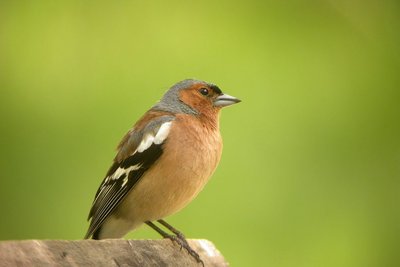
Le pinson des arbres - Damien Combrisson - Parc national des Écrins  Fauna
FaunaThe chaffinch
A very common bird, the chaffinch lives in forests as well as villages. The male is in shades of pink, with a blue-grey cap; the female is duller, in shades of greenish grey. It is a rather gregarious bird, except in the breeding season, and the birds often communicate with one another by their « pink, pink » calls. It is partially migratory. The populations from Northern Europe come to spend the winter in France and other temperate countries.

Le pin sylvestre - Parc national des Écrins  Flora
FloraThe Scots pine
On the edge of the track, there is a large stand of Scots pines. This softwood tree can be identified by the beautiful salmon colour of its branches and the upper part of its trunk. Its short bluish-green needles are grouped in pairs. Capable of withstanding both low temperatures and summer droughts, it is perfectly adapted to the semi-continental climate of intra-alpine valleys.
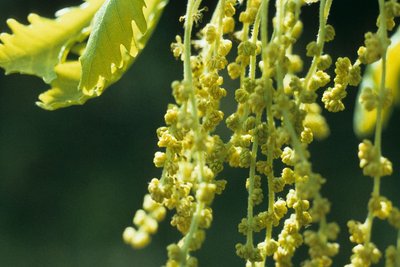
Le chêne pubescent - Parc national des Écrins  Flora
FloraThe downy oak
In the wood, downy oaks grow alongside Scots pines. . It is a small oak tree with marescent leaves: they dry out in the autumn but remain on the tree all winter. It is called "downy" because the young branches, buds and sometimes the undersides of its leaves are covered in a fine down. Forests of Scots pine and downy oak are typical of the warm, south-facing mountain slopes in intra-alpine valleys.
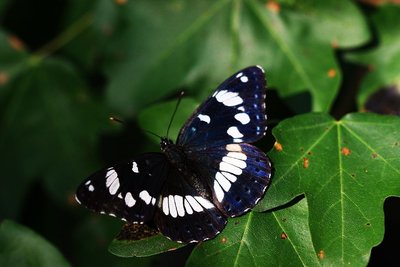
Sylvain azuré - Damien Combrisson - Parc national des Écrins  Fauna
FaunaThe admiral butterflies
You might be lucky enough to spot the white admiral and the southern white admiral, butterflies with dark wing uppers intersected by a white strip and with an orangey-fawn underside. They are difficult to spot as they use their colouring and the shadows under the trees to blend into the background. They are both very shy. These two species are very similar; the females, unusually, lay their eggs on honeysuckles.
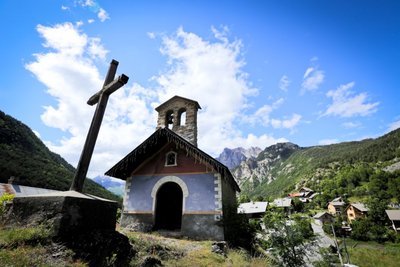
La Bâtie des Vigneaux - Jan Novak Photography  Vernacular heritage
Vernacular heritageLa Bâtie des Vigneaux
This hamlet owes its name to an old fortified house, no longer in existence, owned by the lords of La Bâtie. The colourful little chapel is dedicated to Saint Claudius.

Des feuilles de tremble - Bernard Nicollet - Parc national des Écrins  Flora
FloraRiparian forest
The track runs through a wood of alder, beech, aspen and oak, the remnant of the natural forest growing at the water's edge, called riparian forest. This type of forest is in decline everywhere, destroyed by urbanisation and by containment of the mountain streams. Yet it is an essential zone for the fixation of river banks and for purifying the water. Since it offers specific natural habitats, it also plays a major role in maintaining biodiversity.
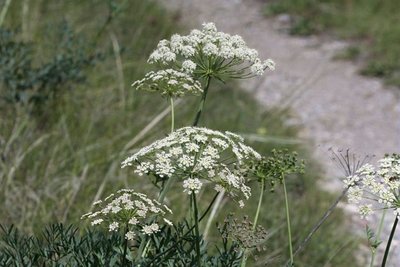
Le laser siler - Cédric Dentan - Parc national des Écrins  Flora
FloraThe laserwort
After the bridge, a large plant with flowers arranged in umbels (in other words, an umbellifer) clings to a small rock bar to the right of the track, the laserwort. This plant belongs to the family Apiaceae, which used to be called umbellifers, and grows in dry areas. It has a distinctive feature: in autumn, the basal part of the stem breaks of its own accord and the entire plant, now dry, sets off rolling down the hillside like a large ball, or is blown by the wind.

La mésange à longue queue - Robert Chevalier - Parc national des Écrins  Fauna
FaunaThe long-tailed tit
Some birds are causing a stir in a tree, constantly coming and going and uttering little calls. They are round and black and pinkish beige in colour with a long tails, hence their name, the long-tailed tit. They are resident birds and always live in small groups. They inhabit forests, undergrowth and even gardens. They weave a ball-shaped nest out of lichen, moss and dry grass.
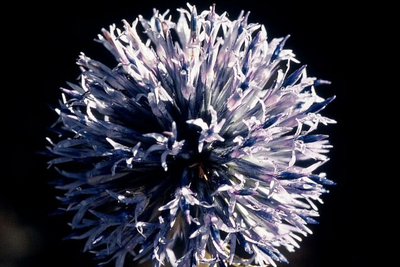
L'échinops à tête ronde - Bernard Nicollet - Parc national des Écrins  Flora
FloraThe great globe thistle
On the edge of the path grows a tall plant with quite wide and smooth leaves, and completely round whitish or very pale blue flower clusters. This is the great globe thistle, a relatively rare plant. It is a cousin of the southern globe thistle which can be seen everywhere in dry places. This one is smaller and has clusters of bluish flowers and spiny leaves.
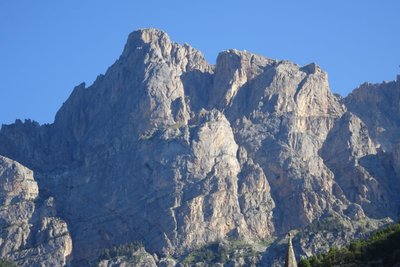
Vue sur le Massif du Montbrison - Office de tourisme Pays des Écrins  Panorama
PanoramaThe view over the Montbrison massif
The path offers a beautiful overall view of the limestone massif of Montbrison, overlooking the hamlets of Pelvoux and including the Cime de la Condamine, the Tête des Lauzières, the Pic de Montbrison and the Tête d'Amont.

Le four banal des Vigneaux - Office de tourisme Pays des Écrins  Vernacular heritage
Vernacular heritageThe communal oven
Legend has it that the Lord caused a communal oven to be built and kept it maintained. The local people could use this oven in exchange for the payment of a levy. Families would prepare and knead their own dough at home and then bring it to the oven for baking. Names were drawn by lot to establish their turns.
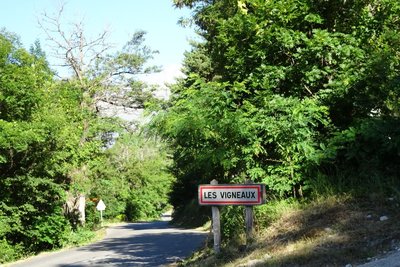
Les Vigneaux - Office de tourisme Pays des Écrins  History
HistoryImages of the grapevine
Les Vigneaux owes its name to the vine cultivation once plied on its hillsides. The grapevine is also depicted on the town's coat of arms, which has a vineplant, and also on the traditional houses with vine trellises. Houses with grape presses are also a reminder of the importance of the grapevine.

Cadran solaire de l'église des Vigneaux - Office de tourisme Pays des Écrins  Vernacular heritage
Vernacular heritageThe sundial
The sundial is an eighteenth-century tradition widespread across the Southern Alps where the sun is ever-present. Artisan sundial makers produced these sundials, which were added as a decoration to house fronts, religious buildings or, as here, a tower. The sayings inscribed on them make some of these artistic works philosophical as well as decorative.
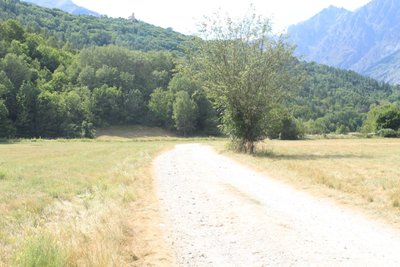
L'ubac - Office de tourisme du Pays des Écrins  Geology and geography
Geology and geographyThe "ubac"
The track rises gently up the right-hand bank of the Gyronde, on the "ubac" side. The "ubac" is the slope that is exposed to the north, so it is in shadow in winter when the sun is low in the sky.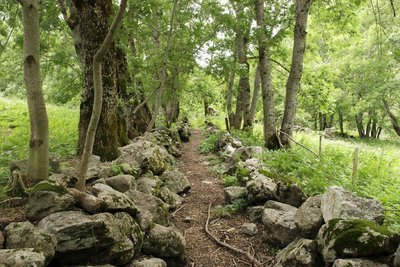
Les Eyssarts - Dominique Vincent - Parc national des Écrins  History
HistoryLes Eyssarts
The track runs through a place called Les Eyssarts, which gave this circuit its name. This name comes from the word essart which refers to «a place that has been cleared, most often to create agricultural land». A few meadows, but above all former canals and low walls hidden under the advancing forest, bear witness to this past use of the land.
Access
Source


